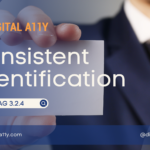Understanding WCAG SC 3.3.3 Error Suggestion

3.3.3 Error Suggestion: If an input error is automatically detected and suggestions for correction are known, then the suggestions are provided to the user, unless it would jeopardize the security or purpose of the content. (Level AA)
Error Suggestion Transcript
Hello everyone. Today, we’re going to talk about error suggestions. We will also discuss their importance, the benefits for various users, some examples, and how we can fix them.In online forms, ranging from login forms to applications, if websites and apps are designed to detect input errors automatically, they should also provide error suggestions to guide users on how to fix those errors, unless such suggestions pose a risk to the security of the websites and apps. For example, if a user enters the date of birth as “16/12/1990” in an online form, which is incorrect because the site only accepts the format “month/day/year,” the error message should not only indicate the error but also provide the correct format, such as “Please enter the date of birth in the expected format: month/day/year.”
But who benefits from this? It benefits users with learning disabilities. Providing error suggestions helps them fix mistakes. Otherwise, they may just abandon the form due to difficulties in understanding and addressing the errors.
Now, let’s consider a good example. An online loan application provides error messages suggesting how to correctly fill in fields such as the bank account number, SSN number, and telephone numbers, as these fields may require a specific format.
Now, let’s examine a failure scenario in error handling. An insurance website’s enrollment form detects input errors for all the fields, but instead of providing specific error suggestions, the error message is generic, such as “Please fill this field.”
Now, let’s see how we can fix this issue. One should provide error suggestions when input errors are detected, specifically indicating how to correct the errors. One should offer context-sensitive help when errors are detected for specific fields, providing guidance on how to properly fill in those fields. One should use “aria-required” attributes for required fields, making it clear to screen reader users which fields are mandatory and which are optional.
In conclusion, integrating error suggestions into web development practices is vital for promoting accessibility and inclusivity. By providing appropriate input assistance, web content can be made more accessible, allowing people with disabilities to fully participate in the digital world.
This is the end of the video. Thank you for joining. If you like the video, do like and subscribe.
While SC 3.3.1 Error Identification talks about providing the errors in text format the SC 3.3.3 Error Suggestion is a little different & easy to follow. The intention of this success criterion is to help users identify the errors & provide them with right hints if the form validation fails. For example if an email address is left blank or entered incorrectly, the error message “invalid email address” is not sufficient. In this instance, the error message is not providing enough information to the user to fix the error & provide the right data to pass through the form validation. The right error would be “invalid email address, enter [email protected]”. In this example, users are aware of what pattern to enter in specific form fields that need a specific data pattern. The error suggestion also applies to the fields that are required to pass the form validation. Here letting the users know the specific field is required along with right hint of how to enter that data will enable them to complete the form submission.










